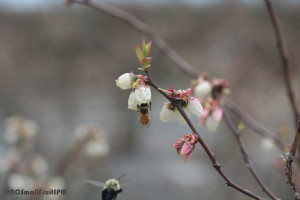Does Bee Diversity Change How Pollinators Behave in Blueberries?
go.ncsu.edu/readext?256508
en Español / em Português
El inglés es el idioma de control de esta página. En la medida en que haya algún conflicto entre la traducción al inglés y la traducción, el inglés prevalece.
Al hacer clic en el enlace de traducción se activa un servicio de traducción gratuito para convertir la página al español. Al igual que con cualquier traducción por Internet, la conversión no es sensible al contexto y puede que no traduzca el texto en su significado original. NC State Extension no garantiza la exactitud del texto traducido. Por favor, tenga en cuenta que algunas aplicaciones y/o servicios pueden no funcionar como se espera cuando se traducen.
Português
Inglês é o idioma de controle desta página. Na medida que haja algum conflito entre o texto original em Inglês e a tradução, o Inglês prevalece.
Ao clicar no link de tradução, um serviço gratuito de tradução será ativado para converter a página para o Português. Como em qualquer tradução pela internet, a conversão não é sensivel ao contexto e pode não ocorrer a tradução para o significado orginal. O serviço de Extensão da Carolina do Norte (NC State Extension) não garante a exatidão do texto traduzido. Por favor, observe que algumas funções ou serviços podem não funcionar como esperado após a tradução.
English
English is the controlling language of this page. To the extent there is any conflict between the English text and the translation, English controls.
Clicking on the translation link activates a free translation service to convert the page to Spanish. As with any Internet translation, the conversion is not context-sensitive and may not translate the text to its original meaning. NC State Extension does not guarantee the accuracy of the translated text. Please note that some applications and/or services may not function as expected when translated.
Collapse ▲Bees are essential for blueberry pollination in addition to many other crops, and since 2009, we have conducted research to understand who the important pollinators are in North Carolina blueberries. This was the focus of recent masters student Shelley Roger’s thesis, which addressed three key questions: What bees are present in NC blueberries? How do those bee species perform as pollinators? And how do species interactions influence pollinator performance?
In the next few posts, we’ll highlight some of the useful results from this work. First we’ll address the question: Do bees behave differently when interacting with other species in blueberries?
Work conducted on sunflowers grown in California demonstrated that interactions with wild bees facilited greater pollination by honey bees through greater movement between flowers.
We suspected that a diverse pollinator community was also beneficial for blueberries, and we wanted to determine if similar mechanisms contributed to these benefits.
Bee interactions in blueberry fields are, however, rare. In 10 hours of video recordings we made in NC blueberry fields, only one interaction between bees (two honey bees) was observed.

A rare event, a southeastern blueberry bee approaches a honey bee foraging at a blueberry flower. Photo: Hannah Burrack
In order to measure bee interactions, screen houses were stocked with honey bees and commercially available bumble bees (Bombus impatiens) and provisioned with artificial feeders. Honey bees did not act differently when encountering other honey bees or bumble bees on the artifical feeders. They were more likely to leave the “flowers” when interacting with either than if left uninterupted. Interestingly, however, bumble bees were more likely to leave an artificial feeder when interacting with a honey bee than following an interaction with another bumble bee.
The infrequency of bee interactions in blueberries may suggest that species interactions may not be a main driver of the benefits of diversity in blueberries. Observations in our artifical arenas suggest that bee interactions on smaller flower clusters, such as blueberries, may differ from those seen in sunflowers.
Next, we’ll look at differences in pollinator performance in blueberries.
More information
Greenleaf, S.S. and C. Kremen. 2006. Wild bees enhance honey bees’ pollination of hybrid sunflower. PNAS.
Rogers, S.R., P. Cajarmarca, D.R. Tarpy, and H.J. Burrack 2013. Honey bees and bumble bees respond differently to inter- and intra-specific encounters. Apidologie.


